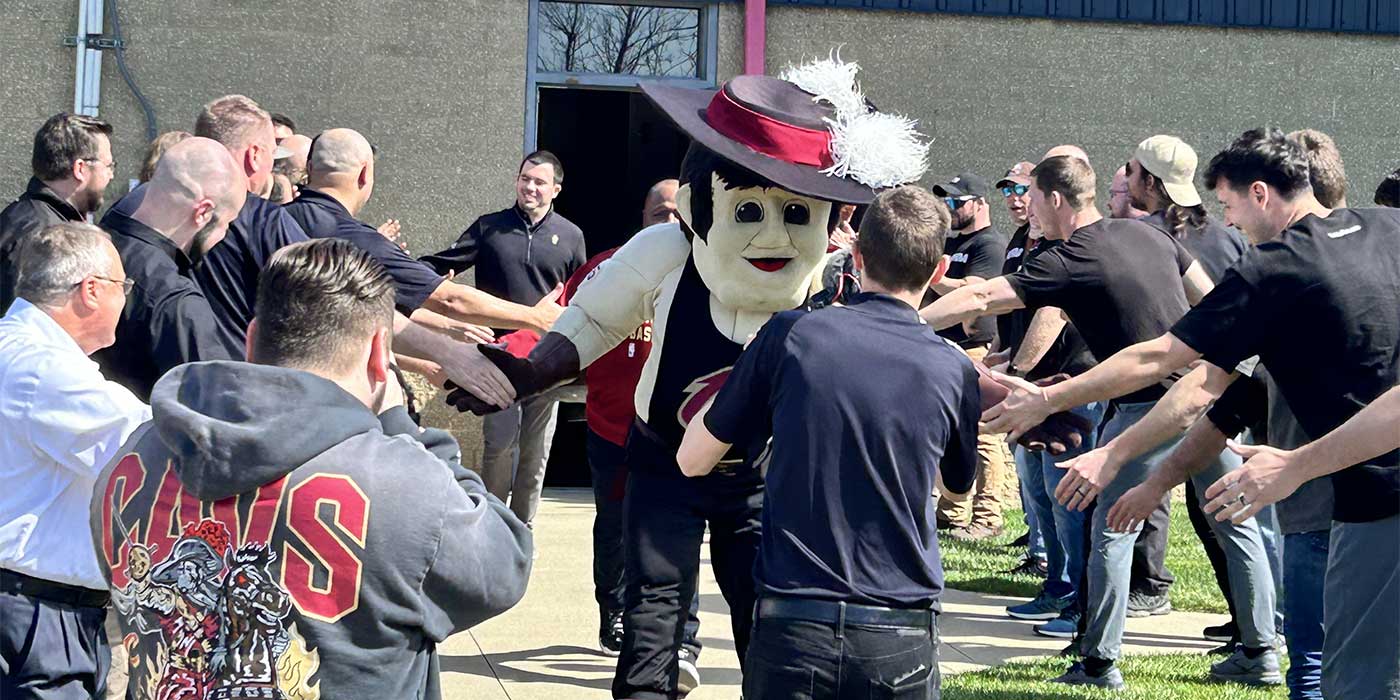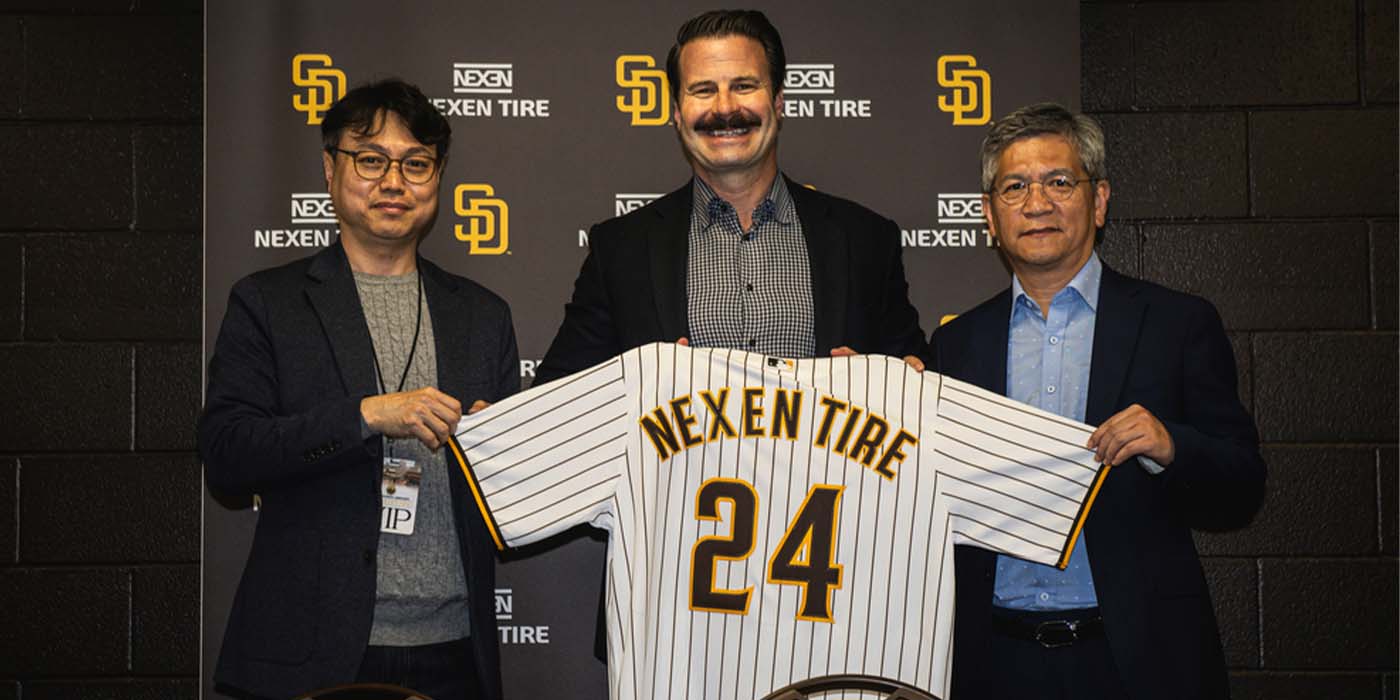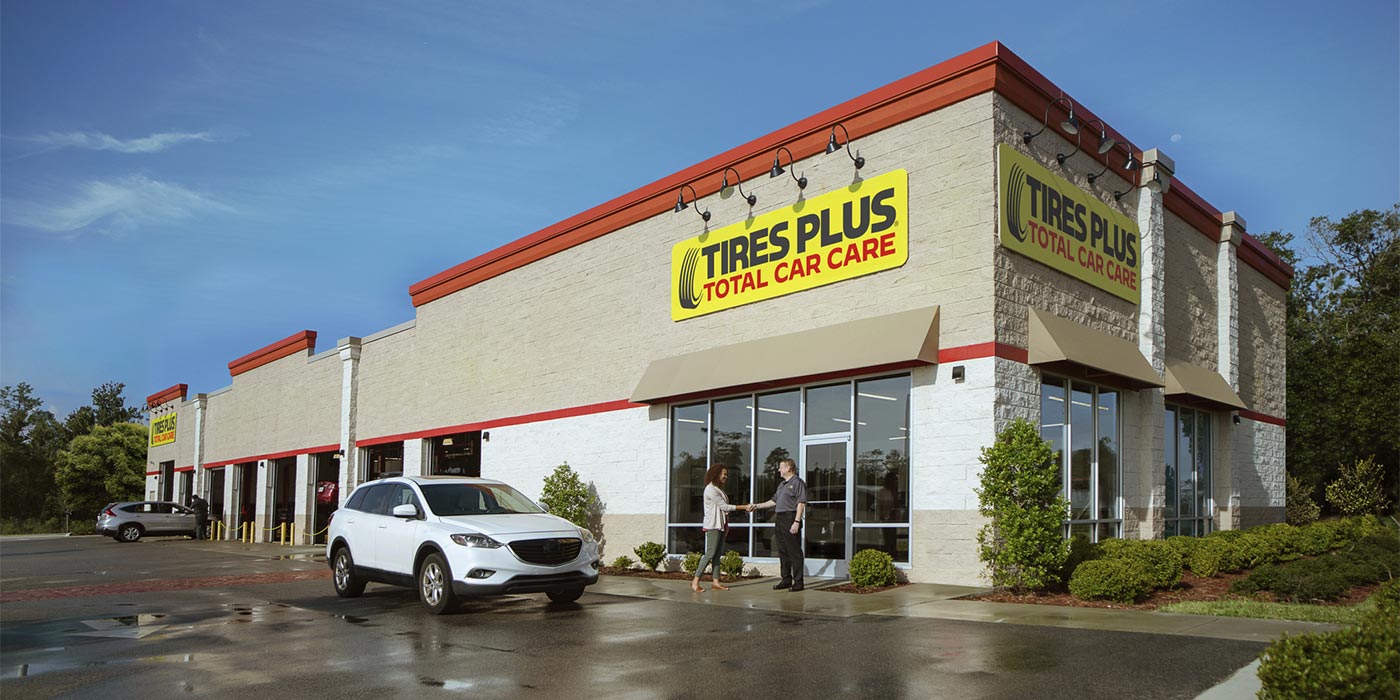Will tire dealers become irrelevant if they don’t master social media?
The imperative for dealers to develop a social media program becomes more evident every day. Hundreds of nationally known companies are supporting their brands and selling additional products and services through the strategic use of social media programs.
When recently asked about change, Gen. Eric Shinseki, a retired U.S. Army four-star general who is currently serving as U.S. Secretary of Veterans Affairs, said, “If you don’t like change, you are going to like irrelevance even less.”
That certainly applies to those who don’t want to recognize the change that social media is bringing to business in general and the tire-selling business specifically.
The fact is that you and your business may suffer if you don’t keep up. There are many examples of businesses that have had a short life span because they didn’t stay on that well-discussed “cutting edge.”
They include Blockbuster (felled by Netflix, online movie downloads and cable-based on-demand movies), the phone book (thanks to cell phones and Google), and maps and atlases (supplanted by MapQuest and now GPS devices).
You can’t deny the current social media groundswell, particularly for the 35- to 54-year-old age group, which has a lot of buying power and is the hot demographic within some social media. A recent survey shows that the number of Facebook users in the 35-54 age group has grown 276% over the past year, and the 55-plus group grew by 194%. Conversely, Facebook’s share of the 25-34 age group grew just 102%, the 18-24 bracket grew by only 21% and the under 17 group saw just 29.6% growth.
One of the “new age” social media experts is Kyle Lacy, president of Brandswag. At a recent well-attended conference on social media held at Kent State University and sponsored by the Akron Area Chapter of the Public Relations Society of America, Lacy said, “The truth of the matter is simply…the world is changing. People are communicating on a completely different level than ever imagined in the past. We are operating under the assumption that we sell to ‘demographic niches’ and ‘user groups.’ This is no longer true or viable.
“Customers are people first and buyers second. We are selling to the individual with choices, tastes, personality and opinions. We can never take another customer for granted. Technology is changing the way we communicate to the outside world and it is up to us as individuals to shift with the change.”
Take a minute and re-read those last two paragraphs, and then think about how you conduct business and how you view and interact with your customers. And then think about how they interact with your competition – especially the big boxers and company-owned stores.
When it comes to customer service, expertise, experience and product selection, we all know independent dealers can easily beat even the best mass merchant and tire company shop. And now there is another place where you can compete on even footing – the strategic use of social media.
Investigate Before You Invest
Websites have been around for the better part of two decades now, and have become easier and cheaper for smaller businesses to deploy. Most tire dealers have developed websites they are using to great advantage (73% of you, in fact, based on Tire Review’s 2009 Dealer Profile Study).
Dealer sites usually contain information about the dealership and locations, a rundown on products and services, maybe a few coupons and photos, perhaps a video. Some dealers even sell tires via their websites, offering a great amount of flexibility and scope to the tire-selling process.
Bottom line here is that dealers are familiar with websites and feel comfortable with them.
Social media, though, is a relatively new phenomenon. Facebook, the clear-cut leader in social networking, is only five years old. MySpace and YouTube are a little older than that, and Twitter is only about three years old. Other popular social services include Flickr, Delicious and LinkedIn, and instant messaging is also included in this group.
Some of these are specific to use (YouTube is all about video sharing, Flickr about photo sharing). LinkedIn is for professional connections (career networking), although groups oriented to specific interests can be formed. With 500 million users, Facebook is the centerpoint for connecting with family, friends and long lost friends; groups and company-oriented pages also can be created. MySpace moved from being the networking leader to becoming a niche service for bands and other entertainers. And Twitter is all about instant sharing.
What exactly is “social media”? Ron Jones, of Search Engine Watch, defined it thusly: “Social media essentially is a category of online media where people are talking, participating, sharing, networking, and bookmarking online. Most social media services encourage discussion, feedback, voting, comments and sharing of information from all interested parties.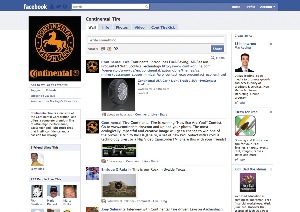
“It’s more of a two-way conversation, rather than a one-way broadcast like traditional media. Another unique aspect of social media is the idea of staying connected or linked to other sites, resources and people.”
The fast growth of social media can be tied directly to two technical innovations: the widespread use of smartphones (cell phones with Internet access) and the development of low-cost (under $500) laptop computers – netbooks. The recently released iPad – and the countless clones that will soon follow – promises to take this all to another level.
Where are tire dealers in the social media spectrum? Some are involved, but most still are not. In a Fall 2009 survey conducted by Tire Review, 74% of the dealers said they weren’t using any type of social media – personally or professionally.
At the outset, you should look on the use of social media as an “extra” to become integrated into your communication strategy. Don’t ignore the traditional way of communicating with your customers and other publics. The well-planned use of advertising, promotion, direct mail and publicity are still important factors to the success of your business.
Because it is a no/low cost option, social media can effectively complement your advertising and promotion efforts…if you have the time and do it right.
Have a Policy
First things first, however. Those “first things” are a social media policy and a plan. Your policy should start with determining your social media objectives, including internal and external uses of your chosen social mediums.
Your social media policy is also a defensive move. Just as you can use Facebook and Twitter to talk about anything you like, so can your employees. We have all heard or read countless stories about employees who were fired for making disparaging comments about their employers on social networks.
A worse example came last year when a couple of knuckleheaded employees at a Merchant’s Tire location in Virginia made what they thought was a funny video about their jobs and posted it on YouTube. While they thought the video was a joke, customers – and, eventually, their employer – weren’t laughing.
While you cannot control what your employees do on their own time, you can make it clear that their social media activities should not be detrimental to your business. Some employers choose to clearly state that such behavior would result in dismissal.
If you, as the owner/manager, don’t want to take on this responsibility, assign it to a staff member who is passionate about social media. Work with this “believer” on drafting a policy.
Vitally important to your entering into the use of social media is making sure you have a good technological base. If you don’t have someone on staff that is versed in establishing a system, hire someone who can do it for you. You can’t afford to have glitches when you start building your community.
Writing a social media policy is definitely not easy, but you can make it easier by accessing a free service at http://policytool.net. Policy Tool will take you through the steps of writing a policy that includes internal and external use. After you follow the prompts and develop your policy, review it and make any changes or additions necessary to personalize it for your dealership.
After you develop your policy, write a plan for how you will use your chosen social media types. The plan should include objectives, strategies, audiences, tactics and some measurement factor. This is nothing more than a classic marketing communications policy.
Scope of Social Media
There are thousands of different social media types. Beyond the brand names mentioned earlier, these include Internet forums, weblogs, social blogs, microblogging, wikis, podcasts, pictures, video, rating and social bookmarking. Technologies include: blogs, picture-sharing, vlogs, wall-postings, e-mail, instant messaging, music-sharing, crowdsourcing and VoIP (voice over Internet provider), to name just a few.
Many of these social media services can be integrated via social network aggregation platforms like Mybloglog and Plaxo. Constant Contact is another platform that can help you integrate and manage whatever social media programs you utilize. These aggregation platforms are to social media as Outlook is to your e-mail.
If you are a beginner to the social media crowd, you should concentrate on four free services – Facebook, LinkedIn, Twitter and YouTube – and possibly look at creating a blog.
Worldwide, Internet users spent more than 5.5 hours a month on social networking sites such as Facebook and Twitter in 2009, an 82% increase over the previous year, according to the Nielsen Company research firm. U.S. users spent nearly 6.5 hours on Facebook compared with fewer than 2.5 hours on Google.
It’s important to note, too, that social media is constantly evolving. Today it’s Facebook and Twitter, tomorrow it will be something else. So if you are planning to engage in social media, you need to stay abreast of shifts and changes in the social media landscape. MySpace didn’t, and as a result it went from being the top dog to an also-ran.
Facebook: Easy to Use
There are now approximately 500 million people on Facebook, making it the most popular of the hundreds of social media formats.
The best thing about Facebook is that it is easy to use and can be adapted for personal and professional use. It’s easy to set up a Facebook account. Just enter Facebook into your browser (facebook.com). When you get the sign-up page, it will walk you through the process.
As a tire dealer, you should sign up for a business account (a “fan page”) and a personal account (which you’ll need to have a fan page). Your business page associates are called “fans” and your personal page contacts are “friends.”
Facebook fans don’t like to receive commercial business messages unless they can be couched in terms that are a general benefit to everyone. Your personal friends page is just for purely social messages. Both types are meant for two-way communication, and near constant communication. You can’t just post a message and forget about it. To be successful – especially on your business page – you have to be willing to reply to messages quickly, interact with fans, and post messages regularly. If not, you’ll quickly be forgotten.
Some dealers have leveraged Facebook to converse with customers and prospects, offer specials, even post photos and videos from special events like open houses, new store openings or track events – all designed to help build interest and “community.”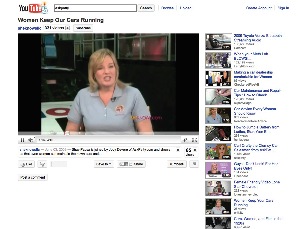
The whole idea is to build your community by adding fans and friends, and you do that by building trust and making people want to communicate with you. This can be done through posting general messages that offer advice. Just don’t get too commercial. It’s one thing to announce the arrival of a new tire model; it’s another to blather on about how great it is.
LinkedIn: Conservative and Professional
Developed specifically for businesspeople, LinkedIn is about career networking. You can create your own resume on LinkedIn, and develop your own networking community. Organizations and businesses are able to place their profiles on the site. Some businesses even use LinkedIn for checking references on prospective new hires.
Some companies create user groups (such as the Tire Review Reader Group), where members can exchange ideas and information, post job openings or share the latest news.
Another good feature on this site is a minimum of inconsequential messages (e.g., “I took a walk this morning.”) compared to the Facebook chronicles of a friend’s life. Still, you have to be careful about posting marketing messages, which may not be accepted.
Twitter: Want to Tweet?
Many Twitter users feel it’s difficult to use because their “Tweets” (messages and updates) are confined to a mere 140 characters – not words, but characters. Still, many tire dealers have become active Twitter users, offering tips and advice, and even coupons or specials available only to their Twitter followers.
Twitter can be used to check the acceptance of a business or product by those who are on the network. This offers an early warning system about negative information. And it is great for instant exposure of your business. While it offers more “openness,” you don’t have to babysit Twitter or instantly answer a message.
On the downside, it is hard to communicate with a 140-character limitation. You can attach photos and small videos, but that is somewhat limited. There is also a high “junk” factor and spam is increasing incrementally.
YouTube: Viral Video
YouTube is a video-sharing website on which users can upload, share and view videos. Created in 2005 – and bought by Google in 2006 for a whopping $1.65 billion – the site displays a wide variety of user-generated video content as well as movie and TV clips and music videos. Most popular are amateur content such as video blogging and short original videos.
As YouTube celebrated its fifth birthday recently, the site boasted that it now draws more than 2 billion hits per day, and hosts enough video content to last more than a century of continuous viewing. That’s more viewers than all U.S. TV networks combined.
Most of the content on YouTube has been uploaded by individuals, although media corporations including CBS, the BBC, UMG and other organizations offer some of their material via the site, as part of the YouTube partnership program.
Unregistered users can watch the videos, while registered users are permitted to upload an unlimited number of videos. Tire dealers who can negotiate the technology required could benefit from posting videos about their dealership and its services, service demonstrations and product clips, as well as video from open houses and other special events.
Blogs Require Attention
You can make a blog (short for weblog) be whatever you want it to be and about any subject you wish. You could discuss your overall business philosophy, your services, your products or your opinion about world matters.
Popular blog sites like Google’s Blogger allow you to establish your own section and accept comments from readers.
Some dealers use their blogs to collect and repost industry news, or, in some cases, vent a little about the industry, suppliers or troublesome customers – probably not the best use of such a public resource.
The single biggest thing to remember about using social media is this: Everything is public, anybody can access it at any time, and it can be reposted all over the place. 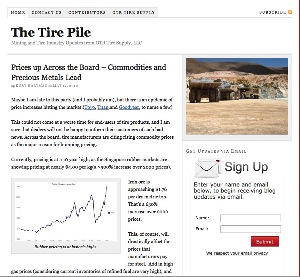
Tiremakers & Dealers
Tire companies have some social media programs they utilize for selling, but not many that are available for dealer plug-in.
Dealers can take steps to become social media savvy by having someone familiar with Facebook help update and maintain their Facebook accounts, according to Dana Zamalloa, PR and communications manager for Continental Tire the Americas.
“Updates need to be frequent in order to keep individuals interested,” she says. “Also, it is very important for the updater to develop a personality for your brand on Facebook.
“Facebook is not as ‘corporate’ as a website and this needs to be considered when developing Facebook and Twitter strategies,” says Zamalloa.
Social media is fast-paced and you must be committed to update and check your Facebook page at least daily and possibly even several times a day, she suggests. Also, have only one or two individuals in charge of maintaining your social media sites. Too many cooks, as they say.
Monitor Your Business
Bridgestone Americas says its tire dealers, like many small business owners, are beginning to experiment with Facebook and Twitter because they see an opportunity to reach consumers where they are – online.
Not only is it a way to interact, social media also gives them another avenue to separate themselves from the competition. With social media, dealers have the ability to use more of their time, rather than their money, to build relationships directly with customers.
Bridgestone has seen many of its dealers using Facebook and Twitter to build a “loyalty club” where followers/fans can get the VIP experience with special discounts, promotions and benefits. There’s often a direct correlation between how much time the dealer spends maintaining the social network and how many fans are following.
Setting up Google Alerts for your business name, monitoring review sites like Yelp.com and keeping a pulse on consumer sentiment by searching for your business’ name on Facebook and Twitter is also recommended by Bridgestone.
Only when dealers have stopped and listened to what consumers are saying about them can they begin to decide how to join those conversations. Dealers may need a strategy that changes the perception of their business, or they may simply want to try and increase engagement with an already loyal customer base, according to Bridgestone.
Today, a consumer can have a bad experience with a business and share it with 500 friends in seconds. While this may appear as a negative, business owners now have the opportunity to turn such feedback into a positive. Having a presence on social media means that the dealer is able to intervene in situations where a consumer is unhappy, and show they do care about their customers by listening to them.
Others Also Involved
Social media participation should involve a discussion – perhaps between the manufacturer and consumers – according to Goodyear. It should not be a traditional form of communication in which the manufacturer simply talks to – or at – consumers. Social media is all about interaction.
Michelin is encouraging dealers to engage with them through the social media platforms it has established over the last two years. Dealers can become friends of the Michelin Man on Facebook. On the site, dealers can find valuable product information, brand updates and helpful tire tips. There is also an established Michelin Man Twitter feed that dealers are encouraged to follow.
Michelin has recently launched www.michelinalley.com, the company’s first-ever motorsports blog site, which will provide dealers with information about Michelin’s performance in the American Le Mans Series. Finally, dealers are able to download and view informational videos and ad spots through Michelin’s dedicated YouTube channel.
Michelin’s truck tire group is now using social media to connect with truck tire customers online. Michelin Americas Truck Tire pages on Facebook, Twitter and YouTube offer up-to-date news, videos and photos of products and industry events. Michelin is also using these outlets to engage in conversations about its new X One XDA Energy super wide tire.
“Michelin truck tire users are passionate about their tires, because they understand the value tires offer,” said Ted Becker, vice president of truck tire marketing. “We’ve noticed the growing trend of the communities we’re a part of, including the trucking industry, embracing these technologies. We’re excited about being a part of the conversations taking place on each of these platforms.”
At least in the short-term, Hankook says it is “rooted in traditional media and simply watching/learning about social media and the impact and opportunities it may present (for dealers) in the future.”
Toyo has tapped into social media through initiatives such as an annual Dakar Rally blog and content sharing on the company’s website at toyotires.com. Before and during the annual Dakar race, which spans some 16 days in January, Toyo hosted a blog that allowed readers to follow its sponsored Team Hummer, led by renowned driver/desert racing champion Robby Gordon.
Spanning three years, the blog was well-received in the off-road community and mentioned in news stories on popular websites Yahoo! Sports, CarDomain.com and others, all the while creating a greater awareness of the Toyo brand.
Toyo also makes it easy for others to share information and entire pages using the “Share This” feature located in the upper right hand corner of its website pages. It offers a large variety of social media networks to choose from and makes sharing easy. Desktop wallpapers featuring Toyo models and racers have also been created and loaded to the website.
411 for New Users
For those dealers who would like to start using social media for research, selling, education and reputation management, there are a number of things they can do to become social media literate. Here are a few tips for consideration:
• Investigate what is available for your use by surveying what friends and colleagues are doing.
• View social media as an addition to your selling tools, not your only selling tool.
• Write a social media policy for internal and external use. Employees need to know the limits of how they can – and cannot – use social media.
• Develop a social media marketing plan with objectives, audiences, strategies, tactics and measurement.
• Select a couple of social media platforms to use at first. Facebook is the easiest to use and has the widest reach. You might want to add YouTube for product and education videos. Later, consider Twitter and LinkedIn.
• Don’t even consider a blog unless you are willing to devote the necessary time to crafting messages and engaging in discussions. If you, or a staff member, have the time, a blog can be a powerful asset.
Whichever way you decide to go, you should definitely dip your toe in the social media ocean.
Failure to master social media probably won’t make you irrelevant today, but who knows what will happen tomorrow. Be prepared!










